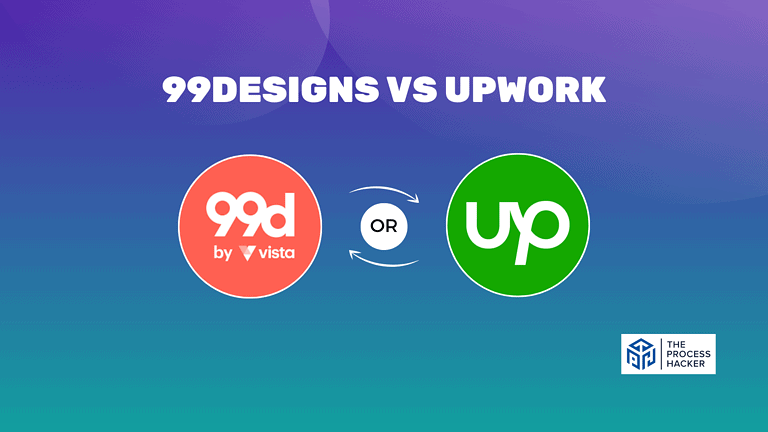How to Organize Your Life: The Ultimate Guide for High Performers in 2024
High achievers and productivity enthusiasts, this one’s for you! Are you constantly battling a sea of tasks and commitments? Do you feel like there’s just not enough time in the day? If so, you’re not alone. Studies show that most people struggle with organization, which affects their productivity.
But what if there was a way to change that? What if you could wake up each day with a clear mind, laser-focused on your goals, and still have time for the things you love?
In this ultimate guide, we’ll show you how to organize your life and become the high performer you were meant to be. We’ll cover practical strategies to:
- Declutter your physical and digital spaces
- Streamline your schedule and prioritize effectively
- Develop powerful habits that support your goals
It’s time to take control of your life and unlock your true potential. Let’s dive in and discover the transformative power of organization!
What is Life Organization?
Life organization isn’t just about color-coded calendars of important dates and spotless desks (though those can be helpful!). It’s about creating systems and structures that streamline your life, allowing you to focus on what truly matters.
Imagine having the mental clarity to tackle your biggest goals, the time to nurture meaningful relationships, and the energy to pursue your passions. That’s the power of a well-organized life.
Whether you’re a seasoned professional, a budding entrepreneur, or simply someone looking to take control of your day-to-day, understanding the principles of life organization is key. It’s about more than just productivity—it’s about creating a life that feels fulfilling and balanced.
Why You Should Master the Art of Organizing Your Life
Ever feel like you’re constantly chasing your tail, overwhelmed by a never-ending to-do list? That’s where life organization steps in. By implementing effective strategies, you can experience a profound shift in how you work and live.
Here’s a glimpse of the benefits that await:
- Increased efficiency and productivity: When you’re organized, you spend less time searching for things or figuring out what to do next. This frees up mental energy and allows you to accomplish more in less time.
- Reduced stress and mental space clutter: A cluttered environment often leads to a cluttered mind. Organizing your life helps create a sense of calm and control, reducing stress and anxiety.
- Improved decision-making abilities: With a clear picture of your priorities and commitments, you’ll be better equipped to make informed decisions that align with your goals.
- Better work-life balance: Organization isn’t just about work. It’s also about creating space for the too much stuff that matters most to you outside of the office.
- Enhanced focus on important tasks and goals: When you’re not bogged down by distractions and disorganization, you can direct your full attention to the tasks that truly move the needle.
Mastering life organization sets you up for success. It allows you to operate at your peak, both personally and professionally. It’s the difference between feeling overwhelmed and feeling empowered.
How to Organize Your Life: The High Performer’s Blueprint
Ready to transform your life through organization? Let’s dive into a step-by-step process that will help you create lasting change.
Step 1: Conduct a Life Audit
Before you can make any meaningful changes, it’s important to take stock of where you currently stand. Think of this as a diagnostic check for your life. It’s time to get honest with yourself and pinpoint the areas that need attention.
Here are some key areas to evaluate:
- Evaluate your physical space: Is your home or workspace cluttered and chaotic? Are you constantly searching for misplaced items? A disorganized physical environment can drain your energy and hinder your productivity.
- Analyze your time management: How do you spend your days? Are you constantly rushing from one task to another, or do you have a system in place to prioritize and manage your time effectively?
- Review your financial situation: Are you on top of your finances, or do you feel stressed and overwhelmed by money matters? Organizing your finances is crucial for achieving peace of mind and long-term stability.
- Assess your personal and professional goals: What do you want to achieve in life? Are your current actions aligned with your goals, or do you feel like you’re drifting off course?
By conducting a thorough life audit, you’ll gain valuable insights into the areas where the organization is most needed. This will allow you to create a targeted plan for improvement and set yourself up for success in the next steps.
Step 2: Declutter Your Physical and Digital Spaces
Now that you have a clear picture of the areas that need attention, it’s time to roll up your sleeves and start decluttering. This step is all about creating breathing room in your life by getting rid of the excess.
Here are some effective techniques to help you declutter:
Implement the KonMari method for physical items
The KonMari method, developed by Marie Kondo in The Life-Changing Magic of Tidying Up, isn’t just about tidying up – it’s about transforming your relationship with your belongings. Start by gathering all items of a specific category (e.g., clothes, books, papers) in one place.
Then, pick up each item individually and ask yourself if it sparks joy. If it does, keep it. If not, thank it for its service and let it go.
This process may seem daunting at first, but it’s incredibly liberating. By surrounding yourself only with items that bring you joy, you’ll create a living space that feels uplifting and inspiring.
Create an efficient filing system for important documents
Piles of paper can quickly take over your desk and create a sense of overwhelm. An efficient filing system is essential for keeping track of important documents and ensuring you can find what you need when you need it.
Invest in a filing cabinet or explore digital solutions like cloud storage or document management software. Create clear categories and labels for your files, and make it a habit to file documents away as soon as you receive them.
Organize your digital workspace and cloud storage
Your digital workspace is just as important as your physical one. A cluttered desktop and disorganized cloud storage can lead to wasted time and frustration.
Set aside dedicated time to go through your files and delete anything you no longer need. Create folders and subfolders to categorize your documents, and use descriptive file names so you can easily locate what you’re looking for.
Unsubscribe from unnecessary emails and notifications
The constant stream of emails and notifications can be a major source of distraction. Take control of your digital inbox by unsubscribing from email lists you no longer read. Adjust your notification settings, so you’re only alerted to the most important updates.
Remember, decluttering is an ongoing process. Make it a habit to regularly evaluate your physical and digital spaces, and let go of anything that no longer serves you. The more you declutter, the lighter and more focused you’ll feel.
By decluttering both your physical and digital spaces, you’ll create a sense of calm and clarity that will permeate every aspect of your life.
Step 3: Master Time Management with Effective To-Do Lists
Time is your most valuable asset. Mastering time management is essential for high performers who want to achieve their goals without sacrificing their well-being. To-do lists are your trusty sidekick in this journey.
Here’s how to make them work for you:
Use the Eisenhower Matrix to prioritize tasks
The Eisenhower Matrix, also known as the Urgent-Important Matrix, is a simple yet powerful tool for prioritizing tasks. It divides tasks into four quadrants:
- Urgent and Important: These are tasks that demand immediate attention, like crises or pressing deadlines. Tackle these first.
- Important but Not Urgent: These are tasks that contribute to your long-term goals but don’t have an immediate deadline. Schedule time for these to avoid them becoming urgent.
- Urgent but Not Important: These are tasks that demand your attention but don’t contribute significantly to your goals, like interruptions or certain meetings. Delegate or eliminate these if possible.
- Not Urgent and Not Important: These are time-wasters, like mindless scrolling or excessive TV watching. Minimize or eliminate these entirely.
By using the Eisenhower Matrix, you can ensure you’re focusing on the tasks that truly matter rather than getting caught up in busy work.
Create daily, weekly, and monthly to-do lists
Breaking down your larger goals into smaller, actionable tasks is key to making progress without feeling overwhelmed. Start by creating a master list of everything you need to accomplish. Then, divide these tasks into daily, weekly, and monthly to-do lists.
Be realistic about what you can achieve in a given timeframe. It’s better to have a shorter list of tasks you can actually complete than a long list that leaves you feeling discouraged.
Utilize time-tracking apps to optimize your schedule
Many of us have a skewed perception of how we spend our time. Time-tracking apps like Toggl and Rize provide valuable data on where your hours actually go.
By tracking your activities, you can identify areas where you’re spending too much time and make adjustments to your schedule. You may be surprised to discover how much time is lost to distractions or unproductive tasks.
Learn to say ‘no’ to non-essential commitments
As a high performer, your time is precious. It’s important to protect it by saying no to commitments that don’t align with your priorities or goals.
This can be challenging, especially if you’re a people-pleaser. But remember, every time you say yes to something, you’re saying no to something else. Be selective about how you spend your time and energy.
Mastering time management and creating effective to-do lists can help you gain control of your schedule and make significant progress toward your goals.
Step 4: Streamline Your Daily Routine
A well-structured daily routine sets the tone for your entire day. It helps you start and end each day on the right foot, maximizing your productivity and well-being.
Design a power morning routine
The first few hours of your day set the tone for everything that follows. Instead of rushing out the door in a frenzy, design a morning routine that fuels your mind and body.
What energizes and inspires you? Maybe it’s a brisk walk or jog, a few minutes of mindful meditation, or journaling to capture your thoughts and intentions for the day. Perhaps it’s simply savoring a cup of coffee while you catch up on the news or listen to an inspiring podcast.
Experiment with different activities and find what works best for you. Remember, consistency is key. Stick to your morning routine, even on weekends, to reap the full benefits.
Plan and prep meals in advance
Decision fatigue is real. When you’re constantly deciding only what to eat, it drains your mental energy and can lead to unhealthy choices. Some of the few tips include planning and prepping your meals in advance, which eliminates this decision fatigue and saves you valuable time during the week.
Set aside some time each week to plan your meals and create a grocery shopping list. Then, batch cook some of your meals or prep ingredients ahead of time so you can easily assemble healthy meals throughout the week. This will not only save you time but also ensure you’re nourishing your body with nutritious food.
Schedule regular exercise and self-care activities
High performers understand the importance of taking care of themselves. Regular exercise and self-care aren’t luxuries – they’re essential for maintaining your physical and mental well-being.
Schedule time in your calendar for exercise, just as you would for any other important appointment. Whether it’s hitting the gym, going for a run, or taking a yoga class, find activities you enjoy and make them a non-negotiable part of your routine.
In addition to exercise, prioritize other self-care activities that recharge you. This could include reading, spending time in nature, getting a massage, or simply taking some time to relax and do nothing.
Create an evening wind-down routine for better sleep
The way you end your day can significantly impact the quality of your sleep. In the hours leading up to bedtime, create a relaxing routine that signals to your body that it’s time to unwind.
This could include dimming the lights, taking a warm bath, reading a book, or listening to calming music. Avoid screens and stimulating activities in the hour before bed, as these can interfere with your sleep.
Establishing a consistent evening routine improves your sleep quality and wake up feeling refreshed and ready to tackle the day ahead.
Step 5: Optimize Your Workspace for Peak Performance
Your workspace is where the magic happens. Whether you work from home or in a traditional office, creating an environment that fosters focus and productivity is crucial.
Set up an ergonomic home office or workspace
Your workspace should be the same place where you can focus and thrive, not a source of aches and pains. Pay close attention to your posture and comfort. Invest in a chair that provides proper lumbar support and adjustability.
Ensure your monitor is at eye level to avoid neck strain, and your keyboard and mouse are positioned to promote a natural wrist alignment. Consider adding a standing desk or a footrest for additional comfort and movement throughout the day.
Utilize productivity apps like Notion or Trello
In today’s digital age, there’s a wealth of productivity apps designed to streamline your workflow and keep you on top of your tasks. Project management tools like Notion or Trello are particularly helpful for visualizing your projects, breaking them down into manageable tasks, and tracking your progress.
They also facilitate collaboration with team members, keeping everyone on the same page. Explore different apps and find ones that resonate with your work style and help you stay as an organized person.
Implement the Pomodoro Technique for focused work sessions
The Pomodoro Technique is a time management method that can help you power through tasks and avoid burnout. It’s simple: set a timer for 25 minutes and work on a single task without distractions.
When the timer goes off, take a 5-minute break. After four Pomodoros, take a longer break of 20-30 minutes. This structured approach helps you maintain focus, get proper rest, and avoid mental fatigue, leading to increased productivity.
Create a distraction-free environment
Distractions are productivity killers. Minimize them by turning off notifications on your devices, silencing your phone, and finding a quiet space where you can concentrate. If you work in a noisy environment, consider using noise-canceling headphones or listening to instrumental music to help you block out distractions and stay focused.
By optimizing your workspace, you’ll create an environment that supports your productivity and helps you achieve your best work.
Your workspace is a reflection of your mind. A clean, organized, and ergonomic workspace will promote clarity, focus, and, ultimately, success.
Step 6: Manage Your Finances Like a Pro
Taking control of your finances is crucial for achieving financial stability and peace of mind. By implementing effective budgeting and financial planning strategies, you can gain a clear understanding of your income and expenses, make informed decisions about your money, and work towards your financial goals.
Strategies for Budgeting and Financial Planning
- Create a comprehensive budget: Start by tracking your income and expenses to get a clear picture of your financial situation. Use budgeting apps like YNAB (You Need A Budget) or Monarch to create a detailed budget that allocates funds for various categories, such as housing, transportation, food, entertainment, and savings.
- Automate bill payments and savings contributions: Set up automatic bill payments to avoid late fees and ensure timely payments. Similarly, automate savings contributions to your emergency fund or investment accounts to make saving a consistent habit.
- Develop a system for tracking tax-deductible expenses: Keep track of expenses that may be eligible for tax deductions, such as work-related expenses, charitable donations, and medical expenses. This can help you maximize your tax savings and reduce your tax liability.
Tools for Tracking Expenses and Investments
- Budgeting apps: Utilize budgeting apps like YNAB or Monarch to track your income and expenses, create budgets, and set financial goals. These apps often provide visual representations of your spending bad and healthy habits, making it easier to identify areas where you can cut back and save more.
- Investment tracking platforms: If you invest in stocks, bonds, or other assets, consider using investment tracking platforms to monitor your portfolio’s performance and track your gains and losses.
- Spreadsheet software: Create your own spreadsheets using tools like Microsoft Excel or Google Sheets to track your finances manually. This can be a good option if you prefer a more hands-on approach or have specific tracking needs that aren’t met by budgeting apps.
Step 7: Cultivate Meaningful Relationships and Network
Strong relationships, both personal and professional, are essential for a fulfilling and successful life. Nurturing these connections requires consistent effort and effective communication. By prioritizing your relationships and actively expanding your network, you’ll create a supportive community that can contribute to your personal and professional growth.
Use a CRM Tool to Manage Professional Contacts
A robust CRM (Customer Relationship Management) tool isn’t just for businesses. As a high performer, you can utilize apps like Dex or Attio to keep track of your professional interactions, follow up on leads, and maintain important details about your contacts. This strategic approach ensures no opportunity for collaboration or advancement slips through the cracks.
Schedule Regular Check-ins with Family and Friends
Your personal life fuels your professional success. Regularly scheduling time to connect with loved ones not only nurtures these relationships but also provides you with a necessary respite from your busy work life. Whether it’s a quick call or a casual dinner, these moments are crucial for a balanced life.
Attend Industry Events and Conferences
To stay ahead, immerse yourself in your industry’s ecosystem. Conferences, seminars, and workshops are excellent for not only keeping abreast of the latest trends but also for connecting with like-minded professionals. Each event is a stepping stone to a potential collaboration, mentorship, or even a career advancement opportunity.
Participate in Mastermind Groups or Professional Organizations
Joining groups or organizations relevant to your field can dramatically boost your professional growth. These platforms offer unique insights, resources, and networking opportunities that are not typically available elsewhere. Engaging actively in discussions and events can establish you as a thought leader and go-to expert in your area.
By integrating these strategies into your life, you’ll not only manage your relationships more effectively but also open doors to new opportunities and experiences. Remember, the core of high performance is not just achieving personal goals but also bringing others along on your journey to success.
Key Considerations for Successfully Organizing Your Life
Organizing your life isn’t about achieving overnight perfection; it’s about making consistent progress and adapting to your unique circumstances. Here are some vital aspects to remember as you embark on this journey:
The Importance of Consistency and Habit Formation
Consistency is the backbone of any successful organizational strategy. You need to develop habits that promote efficiency and effectiveness. This might mean setting aside time each morning to plan your day or using the last ten minutes of your workday to set priorities for the next.
The key is to make these habits stick by integrating them seamlessly into your daily routine, ensuring they become second nature. Tools and apps can assist, but your commitment to these habits will determine your success.
Addressing Common Challenges and Obstacles
You will encounter obstacles as you strive to organize your life, from unexpected commitments to shifts in personal or professional priorities. Address these challenges head-on by maintaining flexible strategies that allow you to adjust your plans without losing momentum.
For example, if an unexpected meeting throws off your schedule, have a system in place to quickly reprioritize your tasks. By anticipating potential disruptions and having contingency plans, you enhance your resilience and ability to stay organized under pressure.
The Role of Self-Reflection and Continuous Improvement
The journey to becoming a high performer is ongoing. Regular self-reflection allows you to assess what’s working and what isn’t.
Take time each week to reflect on your productivity and the effectiveness of your organizational systems. Are you consistently meeting your goals? Do your organizational habits still align with your objectives? Continuous improvement is about tweaking your methods based on feedback from these reflections and adapting to new challenges and opportunities.
Organizing your life as a high performer isn’t just about managing tasks—it’s about managing your growth and ensuring that every step you take is aligned with your broader career and personal goals.
Stay committed, stay reflective, and you’ll find that organization becomes not just something you do, but a core part of who you are.
How to Maintain and Evolve Your Organized Life
So, you’ve laid the groundwork for an organized life—fantastic! But remember, it’s not about reaching a finish line; it’s about sustaining the momentum and continuing to grow. Here’s how to keep your organized lifestyle thriving:
Stay Motivated and Committed to Your Organized Lifestyle
Maintaining motivation is crucial for sustaining an organized life. Keep a visual reminder of the benefits that the organization brings to your efficiency and overall well-being. Celebrate small victories when a new system saves you time or when you meet a tough deadline with ease. These moments reinforce the value of your efforts and motivate you to continue.
Advanced Techniques for High Performers to Further Optimize Their Lives
For those who consistently seek to exceed their own standards, here are some advanced strategies to further sharpen your organizational skills:
1) Regularly Review and Adjust Your Systems
An organized life is not set in stone; it’s a flexible framework that adapts to changing priorities and challenges. Schedule monthly or quarterly reviews of your organizational systems. Are they still serving your highest goals? What could be streamlined or enhanced? This regular audit ensures your methods remain robust and responsive.
2) Seek Feedback from Mentors or Coaches
Feedback is a powerful tool for growth. Engage with mentors or coaches who can provide insights and perspectives on your organizational strategies. They may offer advice that can revolutionize your approach, introduce you to new techniques, or help fine-tune your existing processes.
3) Stay Updated on the Latest Productivity Research and Tools
The field of productivity and organization is always evolving. Keep yourself informed about the latest research, tools, and trends. Whether it’s a new app that syncs your calendars (Google Calendar or Notion Calendar) and to-do lists or a novel method of time management, staying informed allows you to continuously refine your approach.
4) Set Increasingly Challenging Goals to Push Your Boundaries
To truly test and expand your organizational capabilities, set goals that stretch your limits. These might involve taking on more complex projects, aiming for higher efficiency, or pursuing new professional certifications. Each new challenge will not only improve your skills but also keep your motivation high.
Taking it to the Next Level: Apply Organize to Your Own Business
The principles of organization aren’t limited to your personal life. Applying these same strategies to your business can lead to increased productivity, streamlined workflows, and, ultimately, greater success.
Start by decluttering your physical and digital workspaces. Implement systems for managing projects, tracking tasks, and communicating with your team. And don’t forget to schedule regular reviews to evaluate what’s working and what’s not.
An organized business is a more efficient and effective one. By fostering a culture of organization, you’ll empower yourself and your team to achieve remarkable results.
Alternatives to Traditional Life Organization Methods
For those who find conventional organization techniques too rigid or mismatched to their lifestyle, there are numerous alternative methods that might resonate with your personal flair and professional demands.
Here’s how you can tailor unconventional strategies to fit your unique personality and work style:
Bullet Journaling for Creative Minds
If you thrive on creativity and need a flexible system, bullet journaling can be an excellent choice. This method allows you to blend planning, tracking, and artistic expression in a single notebook. You can customize layouts to fit daily, weekly, or project-specific needs, making them as structured or as free-form as you like.
Agile Methodology for Project-Based Lifestyles
Originally designed for software development, the Agile methodology can be adapted for personal organization, particularly if you manage projects that require flexibility and iterative updates. It emphasizes adaptability and rapid response to change, which can be incredibly useful in dynamic work environments or for entrepreneurial ventures.
Minimalism as a Life Philosophy
Minimalism isn’t just about decluttering physical space; it’s about eliminating unnecessary distractions that divert your focus from your goals. Adopting minimalism can help you streamline not only your environment but also your tasks, leading to a clearer mind and a more purpose-driven lifestyle.
Time-Blocking Techniques for Neurodivergent Individuals
Time-blocking can be particularly beneficial if traditional schedules are challenging for you. This technique involves dedicating specific blocks of time to certain tasks or types of work, which can help manage energy levels and improve focus, especially for individuals who benefit from clear, predictable patterns.
By exploring these alternatives, you can discover methods that not only enhance your organization but also align more closely with your natural tendencies and professional requirements.
Final Thoughts on Organizing Your Life
Congratulations! You’re now equipped to transform your life from chaotic to clear. By putting these strategies into action, you’ll be well on your path to joining the ranks of those high performers who seem to effortlessly manage their responsibilities while achieving remarkable success.
You’ll have a life organized with balance. Remember, organizing your life isn’t about reaching perfection—it’s about making continuous progress.
Start with small, consistent steps, and you’ll soon notice your productivity soaring and stress levels diminishing. Embrace the journey to an organized life and reap the immeasurable rewards: increased focus, more free time, stronger relationships, and a sense of control over your own destiny.
So don’t wait! Take that first step today. Tackle that cluttered drawer, create your first prioritized to-do list, or establish a productivity-boosting morning routine.
Your future self will be grateful for the effort. It’s time to go out there and conquer—your organized, extraordinary life is waiting!







